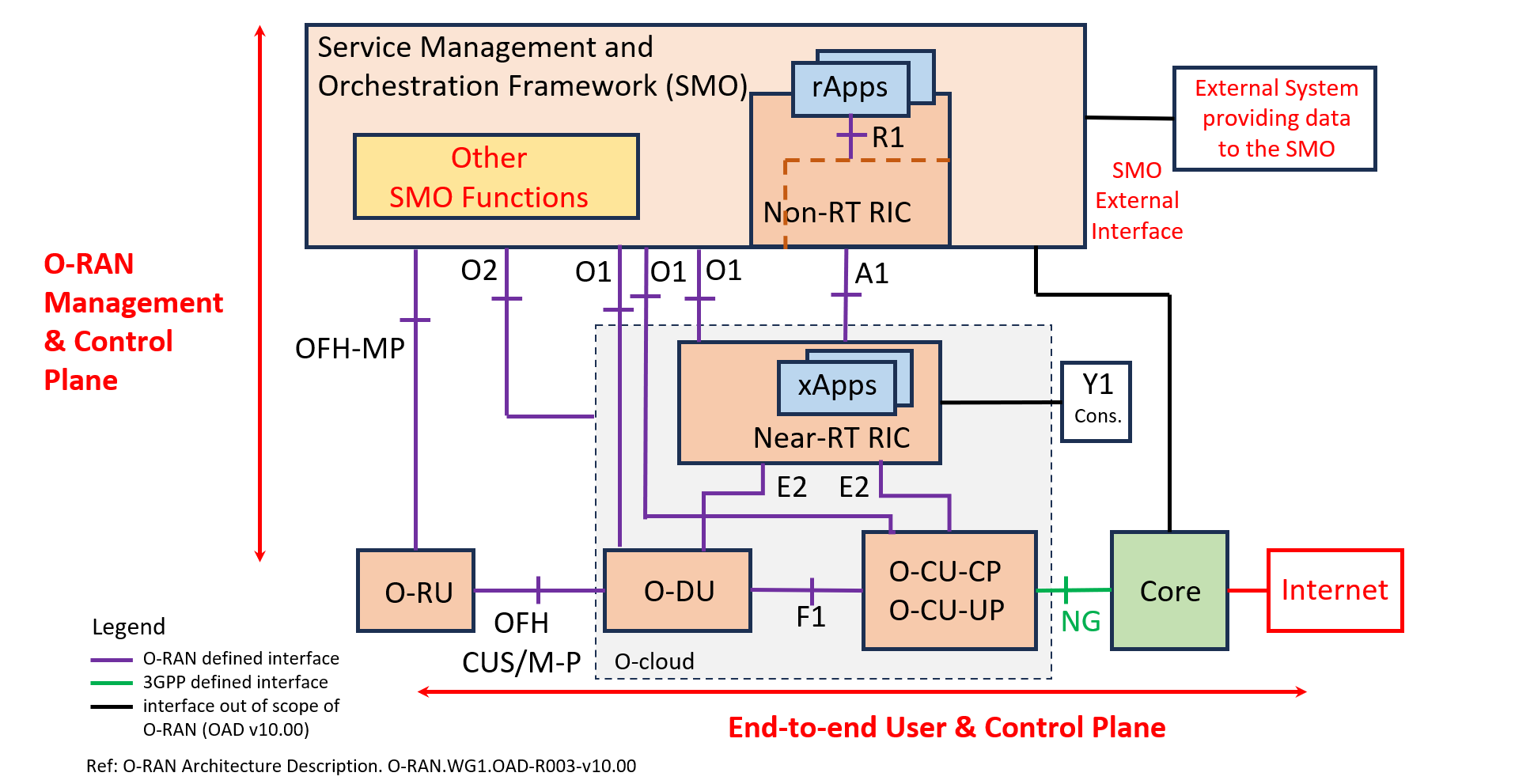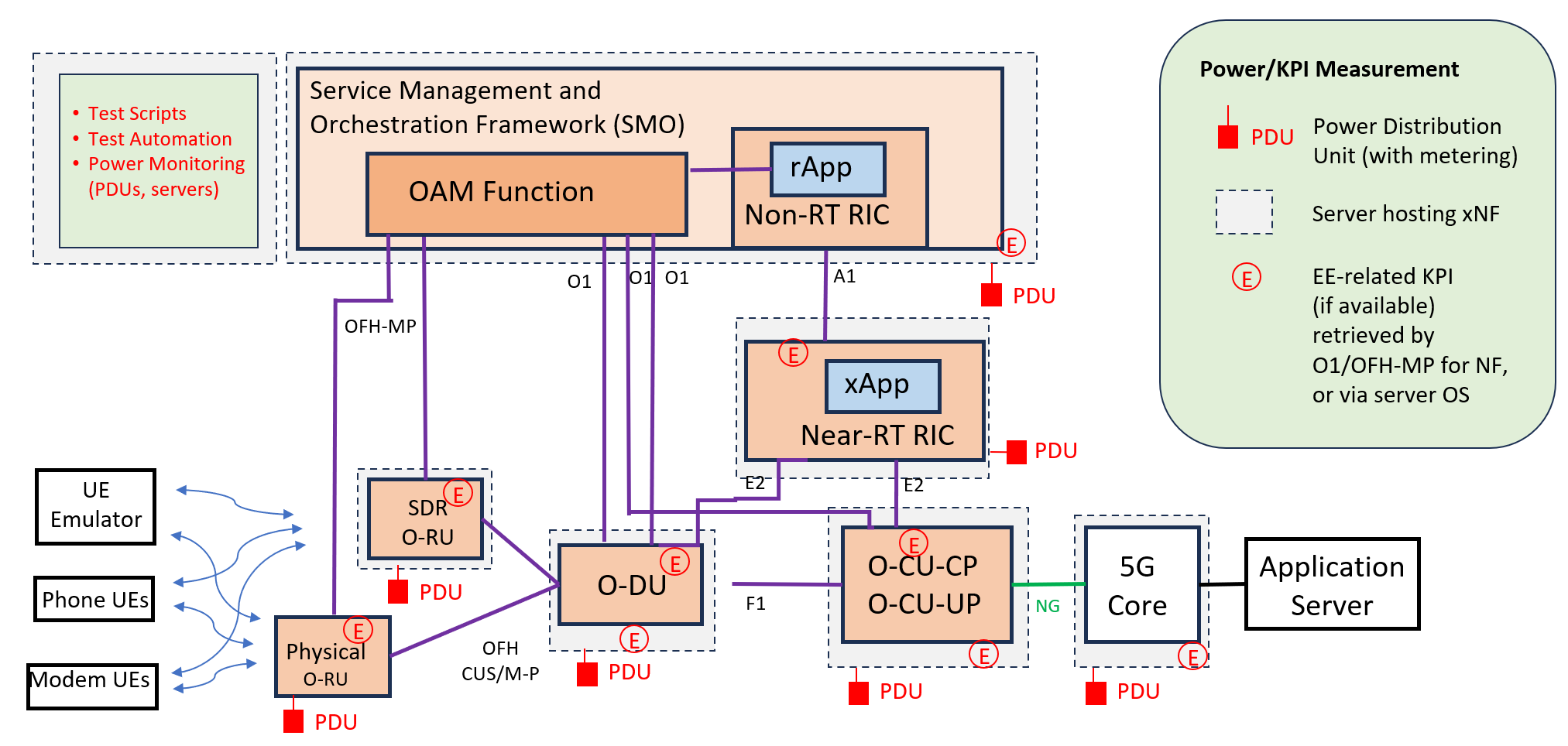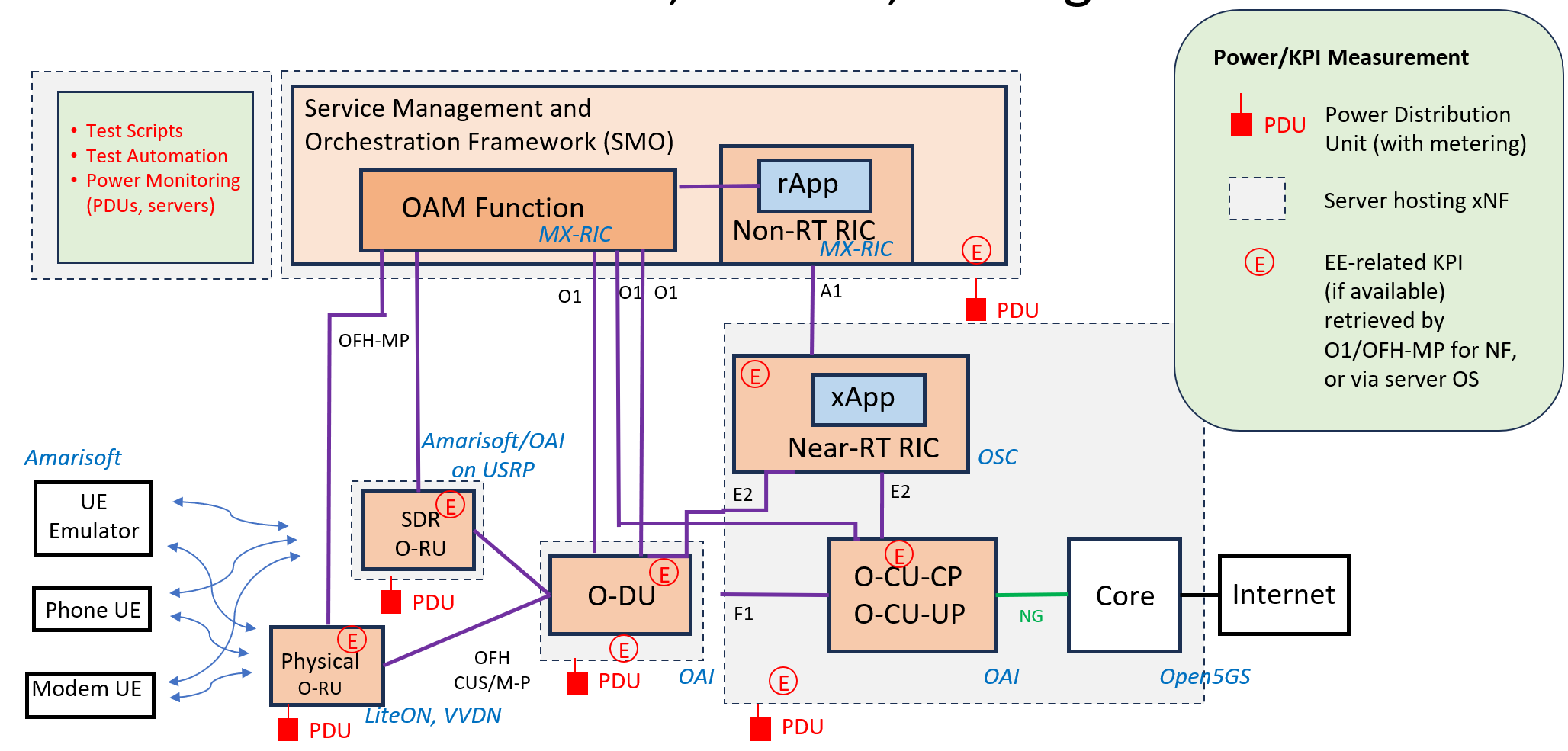| Version 9 (modified by , at 2024-01-30T10:34:52-05:00) ( diff ) |
|---|
Energy Efficiency System Architecture
In the Energy Efficiency research project, we are interested in Open RAN wireless networks based on O-RAN Alliance specifications.
Figure 1 shows the overall O-RAN Architecture. The Radio Access Network (RAN) consists of the O-RU, O-DU, O-CU and Near-RT RIC. When energy savings optimization is applied, most of the energy savings comes from the RAN.
Figure 1. Overall O-RAN Architecture
Figure 2 shows the system architecture to be used for O-RAN Energy Efficiency testing. Each of the VNF/CNF components are hosted on servers depicted with dotted lines. All servers and physical equipment (such as O-RU) have electric power supplied via Power Distribution Units (PDU) which can measure the power consumption.
Figure 2. System architecture for O-RAN Energy Efficiency testing.
Figure 3 shows the system architecture to be used at Winlab leveraging software modules from OpenAirInterface (OAI), Amarisoft, Open5GS, BubbleRAN MX-PDK. Note that some servers host multiple components. The system includes SDR-based O-RU (OAI, USRP) as well as physical O-RU units from LiteOn and VVDN. The UE devices include Android phones, USB modems, and the Amarisoft-based UE-Emulator.
Figure 3. System architecture for O-RAN Energy Efficiency testing at Winlab.
Attachments (3)
- EE_Test_System_Winlab.png (183.3 KB ) - added by at 2024-01-29T13:53:58-05:00.
- EE_Test_System_Generic.png (167.8 KB ) - added by at 2024-01-29T13:54:06-05:00.
- oran_overall_architecture.png (115.5 KB ) - added by at 2024-01-29T13:54:15-05:00.
Download all attachments as: .zip
![(please configure the [header_logo] section in trac.ini)](/chrome/site/your_project_logo.png)


